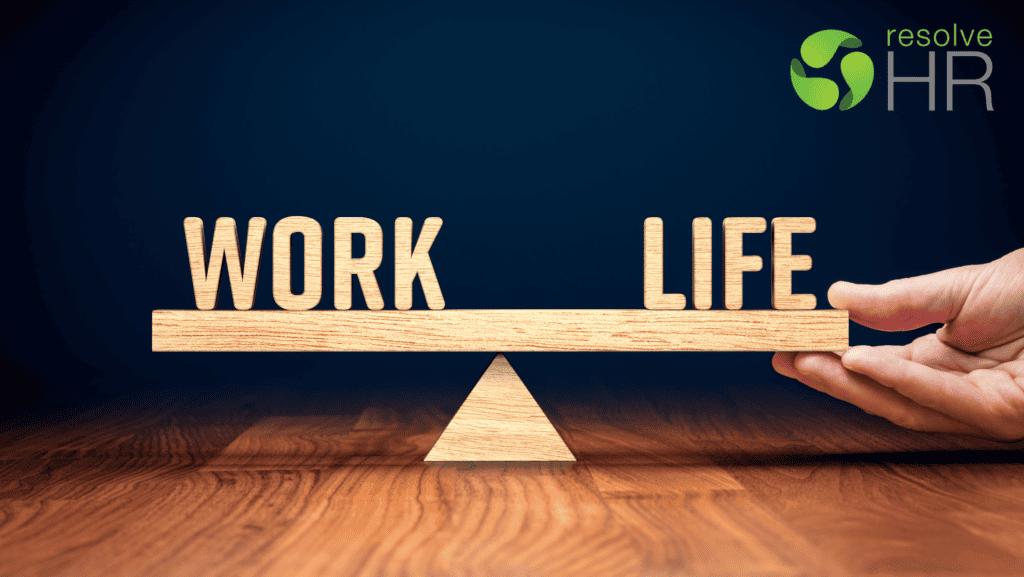
In today’s fast-paced world, achieving a healthy work-life balance is becoming increasingly challenging. The demands of our professional lives often spill over into our personal time, leading to burnout and reduced overall well-being.
This article explores the importance for employers to be able to identify potential signs of burnout in the workplace and what they can do to foster a healthy balance. The cost of not addressing burn-out can be serious for both individuals and organisations with the potential to lead to decreased productivity, increased absenteeism, and even long-term health issues.
Understanding Burnout
Burnout is a state of physical, emotional, and mental exhaustion caused by excessive and prolonged stress[1].
According to the World Health Organisation (WHO), occupational burnout results from chronic workplace-related stress, where symptoms are characterised by “feelings of energy depletion or exhaustion; increased mental distance from one’s job, or feelings of negativism or cynicism related to one’s job; and reduced professional efficacy”[2]
In addition to cost consideration, for example due to lost productivity, under the relatively new Psychosocial Hazard Codes of Practice that many states have now adopted (see the NSW Psychosocial Hazard Code of Practice here), employers now have an increased obligation to ensure they are on the front-foot and proactively addressing the pervasive issue of burn-out and where practicable, increasing the level of organisational support provided.
A two-pronged approach
To address the issue of burn-out and make work more sustainable, Employers need to consider the contributing factors at both the organisational level as well as the individual level.
Organisation level
Look out for different types of burn-out in your workplace. According to the Australian HR Institute[3], three common types of organisational burnout are:
- Overload Burnout – burnout due to overwork, never shutting off and not being able to detach from work. Hybrid work has now become a key contributing factor[4].
- Underchallenge Burnout – due to boredom, not enough work stimulation which can ultimately lead to increased cynicism.
- Neglect Burnout – where people feel worn-out due to feelings of helplessness and unable to impact what is going on around them.
Individual level
Provide people with the resources that’s important for them to value their own wellness. Inform your employees to value their own wellness by:
- Prioritising self-care
- Setting clear boundaries – between work and personal life. That includes being comfortable with saying ‘no’.
- Brushing up on time-management skills – to help achieve the balance
- Detoxing from technology wherever possible
- Seeking additional support – most commonly we think of support from a an expert like a counsellor or psychologist, but this may also take the form of the individual asking their manager directly for help, looking at the role itself, the work hours and what adjustments may be able to be made.
What can leaders do?
Lead by example and be aware of the behaviour expectations that are being set from the top. One example: If you’re sending emails to your team late at night – consider that this may give the impression that you expect others to do the same.
Listen to feedback – don’t brush it off if people are saying that they don’t have enough time to get through their job tasks, or are feeling strapped for resources. Feedback should come from multiple angles: manager one-on-ones, pulse/employee engagement surveys and promotion of a culture that proactively seeks out and values honest feedback.
Affect workplace change – depending on the specific feedback consider what action or programs will do the most to address the current concerns. The sky is the limit and employers can get creative in ways to address burnout. Some examples to consider:
- Learning and development programs, simple mentor programs – to address underchallenge burnout
- Work re-design –to address both underchallenge and overwork burnout. The ‘status-quo’ of doing things the way they’ve always been done may no longer be enough.
- Leave Policies – consider offering additional ‘mental-health days’ or ‘doona days’.
- Hybrid Work or Working-From Home– if it’s commonplace in your organisation,
Work-life balance is not a one-time achievement but an ongoing process that requires conscious effort at both the individual and organisational level.
Remember, a balanced life allows your people to thrive both in their professional and personal domains.
[1] https://www.mayoclinic.org/healthy-lifestyle/adult-health/in-depth/burnout
[2] https://www.who.int/news/item/28-05-2019-burn-out-an-occupational-phenomenon-international-classification-of-diseases
[3] https://www.hrmonline.com.au/leadership/three-types-of-burnout-hr-should-look-out-for/
[4] The State of Workplace Burnout Report 2023
Nick Hedges is the founder of Resolve HR, a Sydney-based HR consultancy specialising in providing workplace advice to managers and business owners. He recently published his first book, “Exiting underperforming Team Members – The Inside Scoop”. It is a practical response to the most pressing HR challenges, which can be found at https://resolvehr.com.au/.
Disclaimer: The contents written do not constitute legal advice and does not cater for individual circumstances. The information contained herein is not intended to be a substitute for legal advice and should not be relied upon as such.
